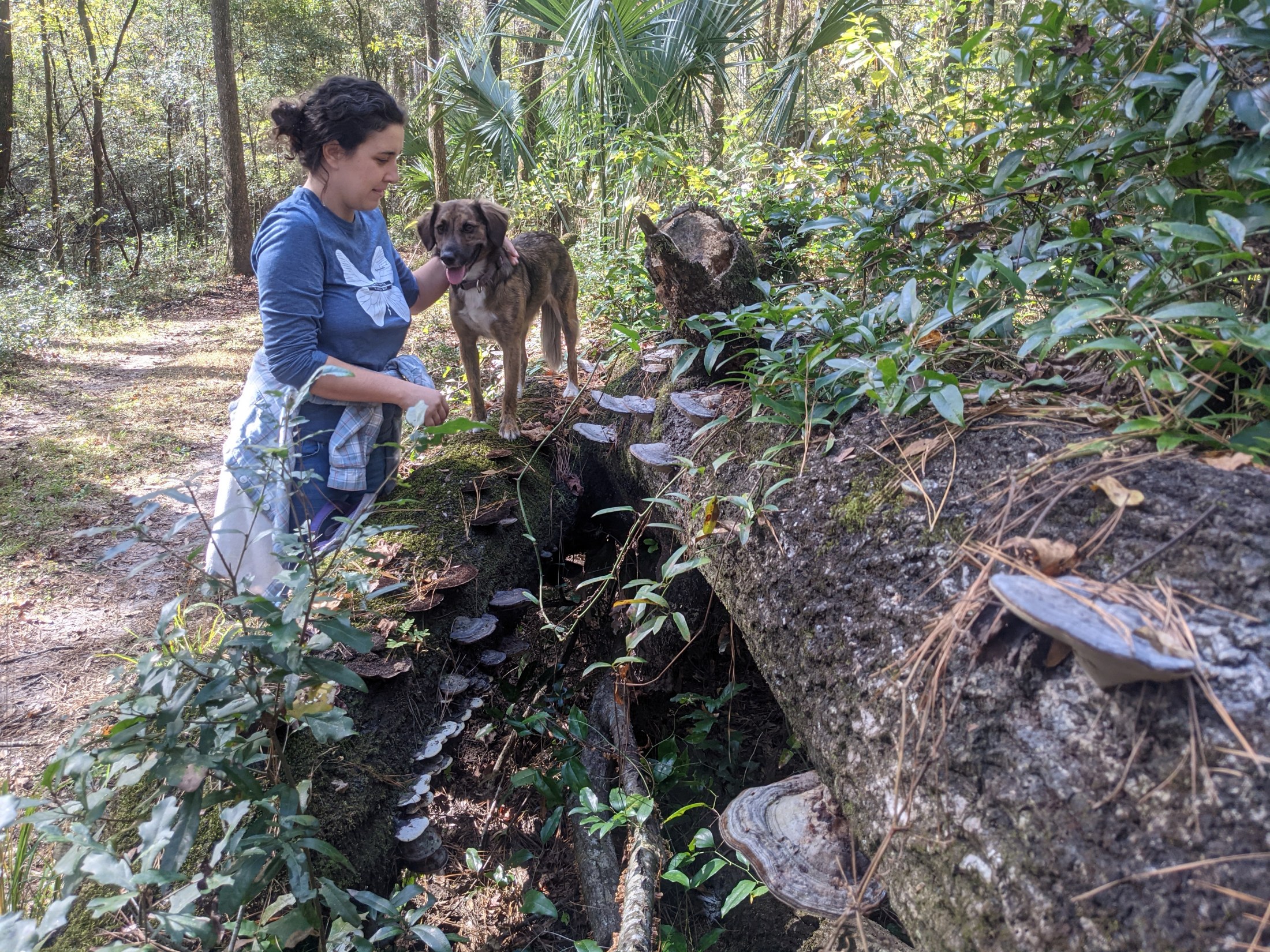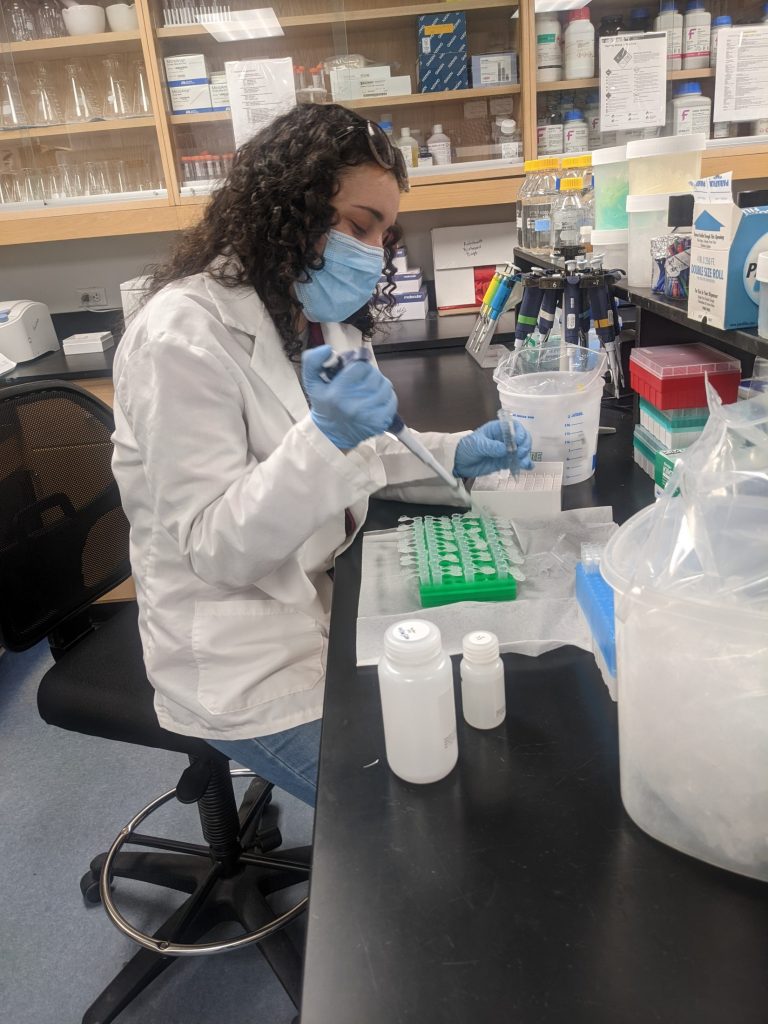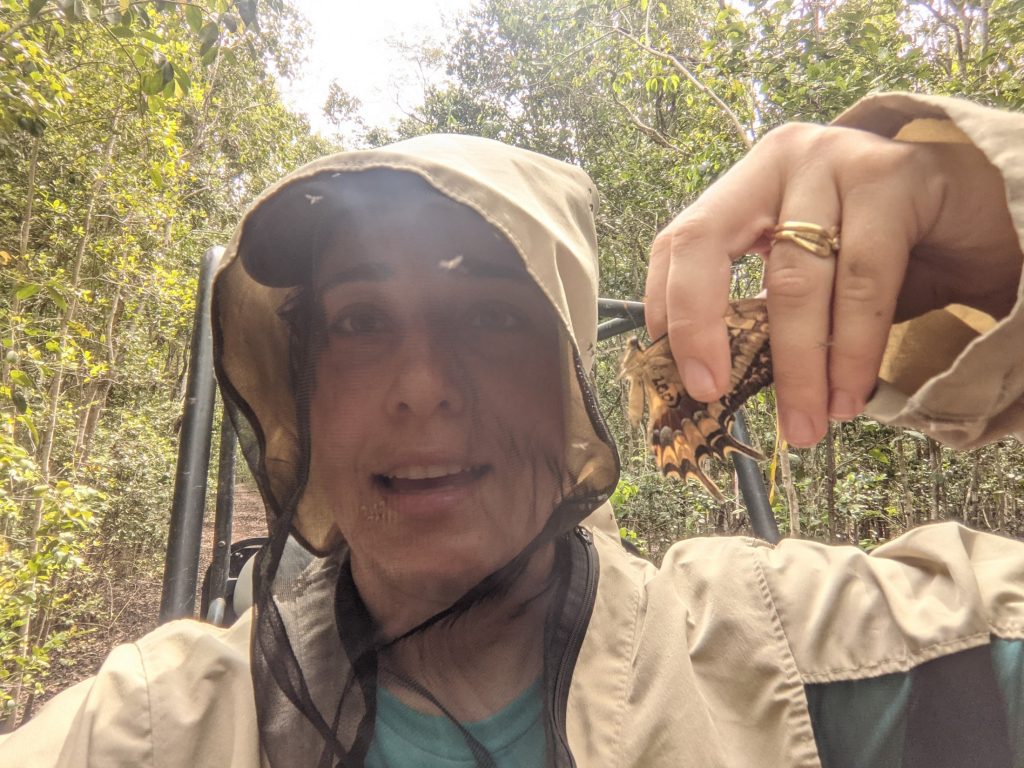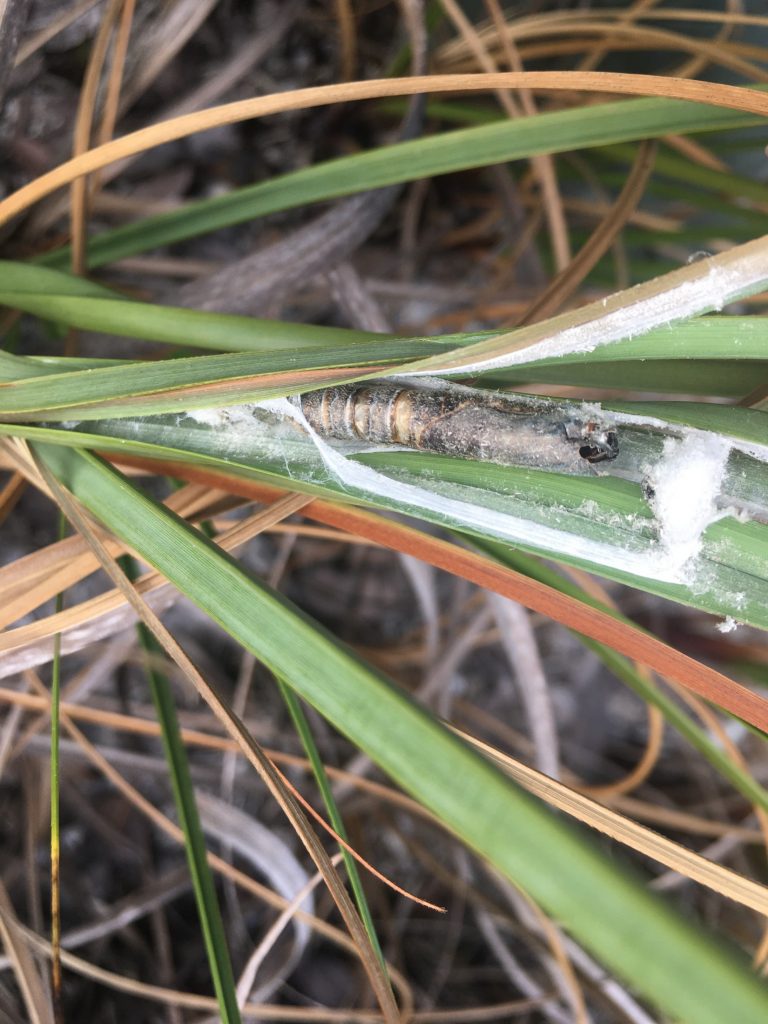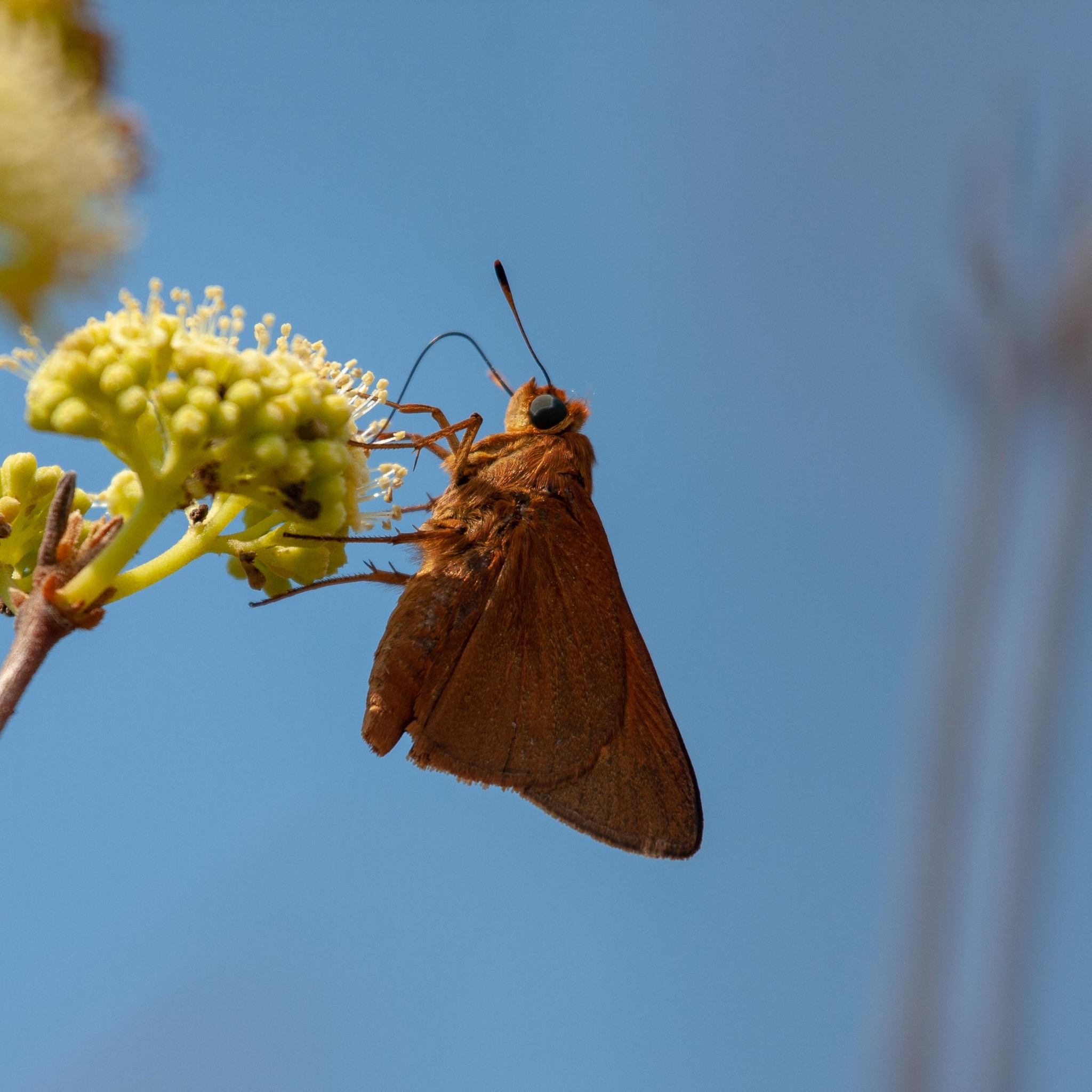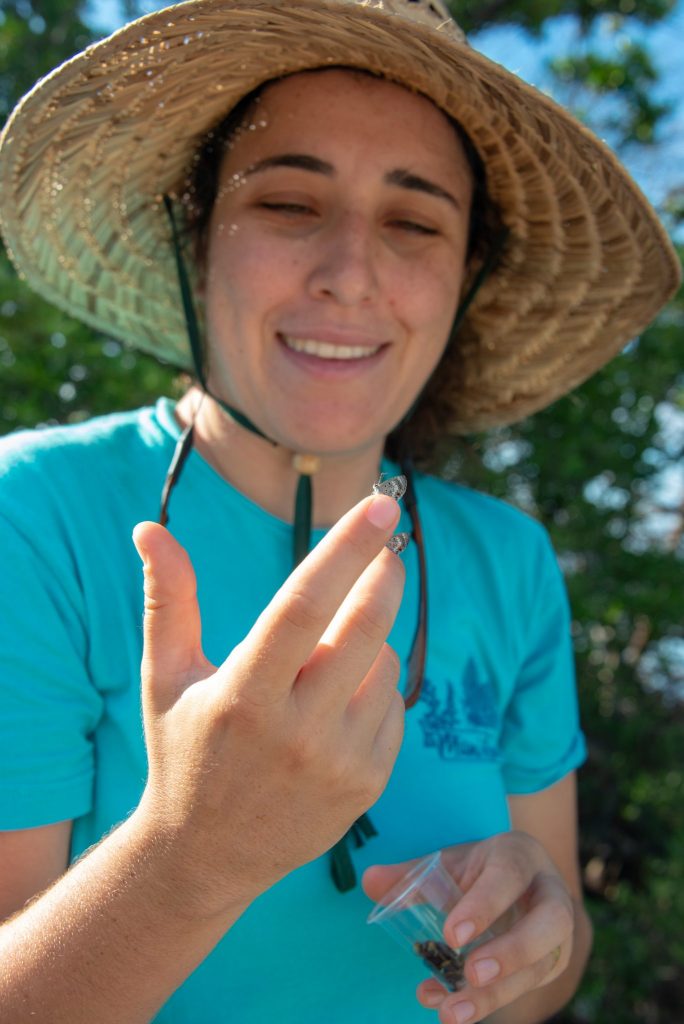
Sarah Steele Cabrera is a third-year Ph.D. candidate in Interdisciplinary Ecology at the School of Natural Resources and Environment (SNRE), a research assistant at the McGuire Center for Lepidoptera and Biodiversity and a Directorate Fellow with the U.S. Fish and Wildlife Service. She is funded jointly through an SNRE assistantship as well as a research assistantship with her advisor, Jaret Daniels. Sarah grew up in Rhode Island, where she discovered a love of nature exploring northern hardwood forests, freshwater swamps, and Narragansett Bay. Before and after earning a B.A. in Biology and Environmental Science from Brandeis University in Massachusetts, she spent several years as a seasonal field biologist crisscrossing the Western Hemisphere in places such as Paraguay, New Mexico, St. Croix, Costa Rica, and a dredging ship off the coast of New York City, working in a diverse array of fields including sea turtle and plant conservation. These years of fieldwork experience became highly valuable in her role as a technician working on the Miami Blue butterfly project in the Florida Keys, which eventually morphed into her Master’s thesis project involving reintroductions of this endangered butterfly. Sarah earned her M.S. from UF’s Department of Entomology and Nematology in 2020.
As a Ph.D. student, Sarah is interested in expanding her knowledge in the growing field of conservation genetics, a field which deals with genetic factors related to population viability, connectivity, and extinction. After spending 10 years doing fieldwork, Sarah reacquainted herself with the laboratory with training and help from the McGuire Center’s then-molecular lab manager (and recent M.S. graduate) Amanda Markee. Sarah’s research questions focus on several subspecies of rare butterflies found in the Florida Keys. The first, Schaus’ Swallowtail (Heraclides ponceana ponceana), is endangered and only found on a few islands in extreme southeastern Florida. Sarah’s objective with this project is to better understand how populations of Schaus’ Swallowtail are connected across different islands, to make inferences about dispersal ability and the genetic diversity of this range-restricted butterfly using genetic samples, from both extant populations as well as museum specimens from the collections at the McGuire Center. The results from this project will be informative for selecting locations for organism translocations, work which is ongoing in the Daniels Lab. The over-arching conservation goal is to create a functional metapopulation of Schaus’ Swallowtail consisting of several well-connected island populations, increasing the chances that the Florida population of this butterfly will persist and grow. Related to this project, Sarah is working with a team of UF researchers to analyze over 35 years of population monitoring data for Schaus’ Swallowtail collected from Biscayne National Park. This incredible data set is the result of work by dozens of researchers that was started by McGuire Center Founding Director, Thomas C. Emmel, in 1985. The results from this project will help researchers to better understand drivers of population trends in this butterfly to inform management and conservation efforts.
Another butterfly of interest for Sarah’s dissertation research is the Palatka Skipper, Euphyes pilatka klotsi. This subspecies, described in 1985 by then Allyn Museum of Entomology researchers Lee Miller, Don Harvey, and Jacqueline Miller, is endemic to a few hundred hectares of freshwater herbaceous wetlands in the Lower Florida Keys and is under review for listing under the Endangered Species Act. Sarah seeks to understand the population dynamics of the Palatka Skipper, including connectivity between habitat patches on different islands and with the subspecies found on the Florida mainland, Euphyes pilatka pilatka, in addition to the butterfly’s phenology and occurrence within a rare habitat that occurs at approximately 1 meter above sea level. This project required the collection of dozens of DNA samples, which can be challenging for a rare butterfly. Sarah made a breakthrough with this aspect of the project when she realized that empty pupal exuviae (skins) could yield sufficient DNA for analysis, which increased the sample size for the study and also reduced the impact of sampling on butterfly populations. Like many skipper butterflies, the Palatka Skipper caterpillar creates shelters by using silk to adhere blades of grass from its host plant, sawgrass (Cladium jamaicense), to form a protective tube where the caterpillar pupates and eventually ecloses. Due to the strength of the Palatka skipper’s silk, these shelters often persist in the environment for many months after the butterfly completes development. This project is funded by the U.S. Fish and Wildlife Service and the resulting data will be useful for the upcoming listing decision and ongoing habitat management. This work has also been made possible by McGuire Center Postdoctoral Associate Ivone de Bem Oliveira, who is mentoring Sarah in the genetic analyses for multiple chapters of her dissertation, as well as field technician Robin Sarabia, who conducted most of the fieldwork for the Palatka Skipper project.
Outside of her research in ecology and conservation, Sarah is keenly interested in environmental education. She participates frequently in the Scientist in Every Florida School Program, created by the Thompson Earth Systems Institute and at other events in the community. Sarah collaborated with former McGuire Center researchers Geena Hill and Samm Wehman Epstein to create a traveling exhibit and coloring book centered on the Miami blue butterfly. The exhibit is currently on display at Crandon Park in Key Biscayne, FL and online. In her free time, Sarah enjoys kayaking, trail running, gardening, and spending time with her husband, dog, two cats, and flock of backyard chickens.
